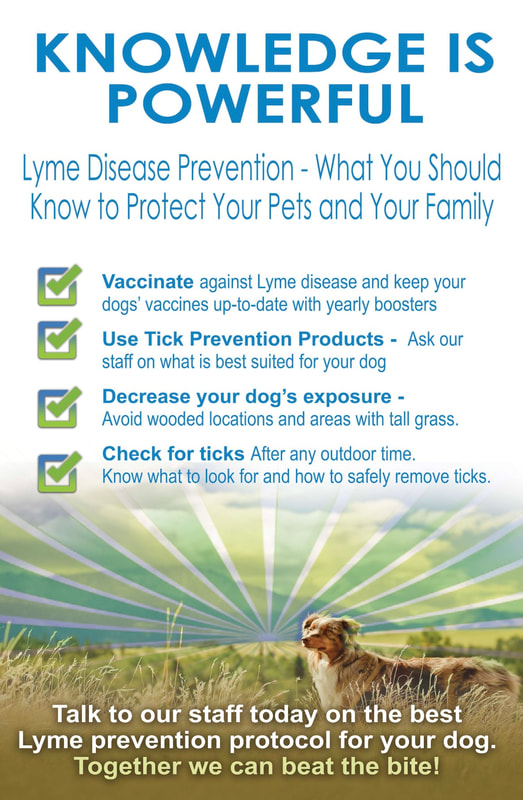3 Key Ways to prevent Lyme disease:
How to safely remove a tick:Make sure you check your pet for ticks after any outdoor time. If you see a tick, here are some tips to safely remove it.
"Don'ts" when removing ticks. These "tricks" or "hacks" are false and may harm your pet.
If you are unsure or uncomfortable removing a tick from your pet, contact our office.
|
Lyme disease is caused by a bacteria called Borrelia burgdoferi. This bacterium is transmitted to animals and people through the Eastern black-legged tick (also known as the deer tick) and the Western black-legged tick. These ticks are extremely small (think sesame seed) and can easily be missed before they enlarge from feeding.
FAQ's
- Ticks prefer to attach in moist, dark areas. So, when checking your dog for ticks make sure your check under the collar, in and around the ears, under the front legs, under the tail, the groin area and even between their toes.
- Ticks do not die after the first frost. The deer tick can remain active in their adult stage from fall to spring as long as the temperature is above freezing. The adult deer tick typically begins its feeding activity about the time of the first frost (or early October) and seeks a host any day that the temperature is above freezing.
- You cannot get Lyme disease directly from your dog. Dogs cannot directly transmit Lyme disease to people, however, dogs can carry infected ticks into your home where they have the potential to move to and infect a human host.
